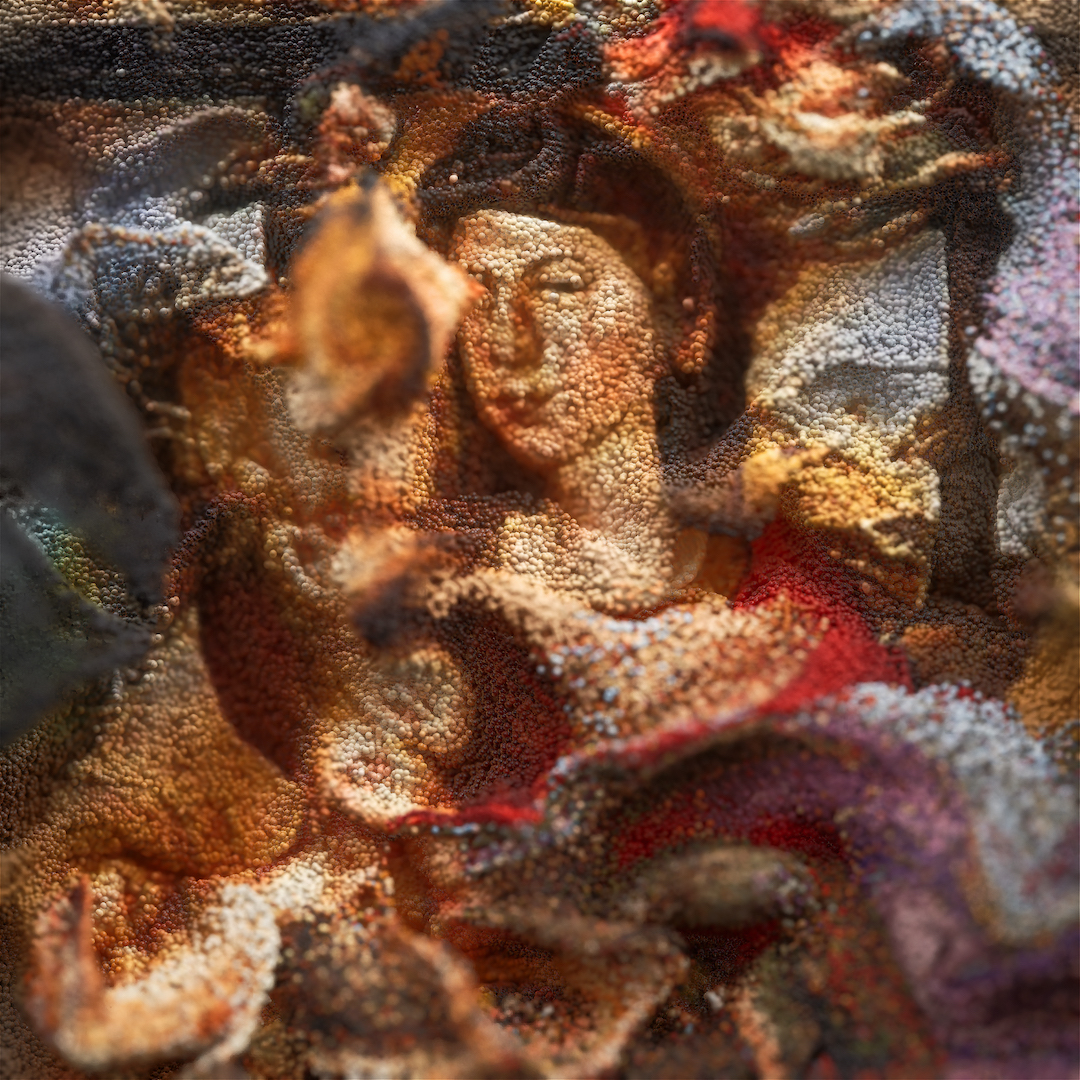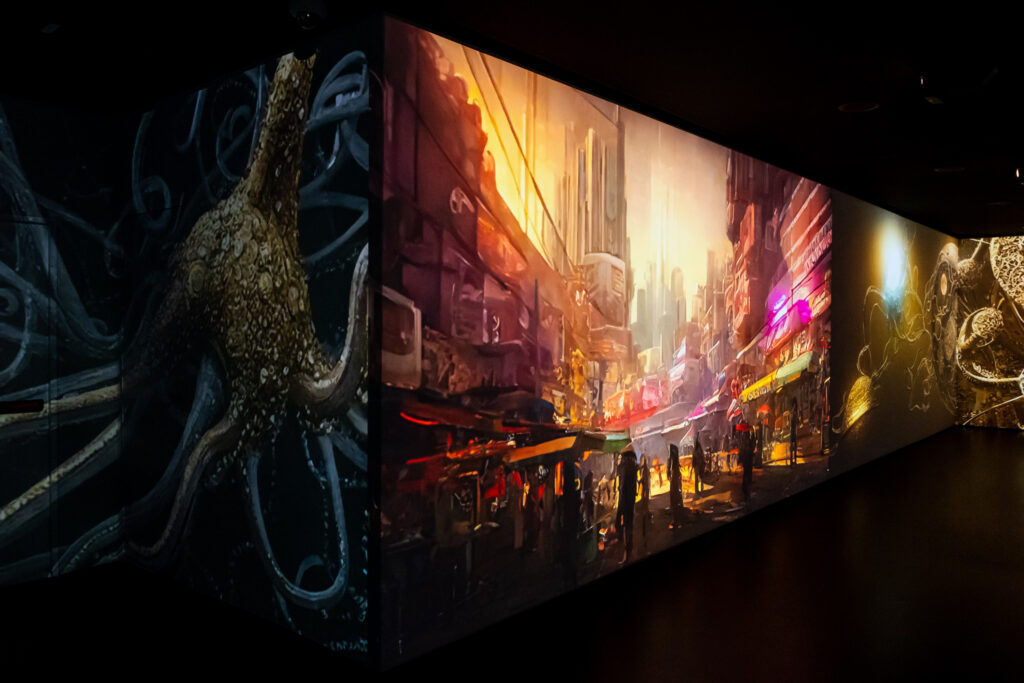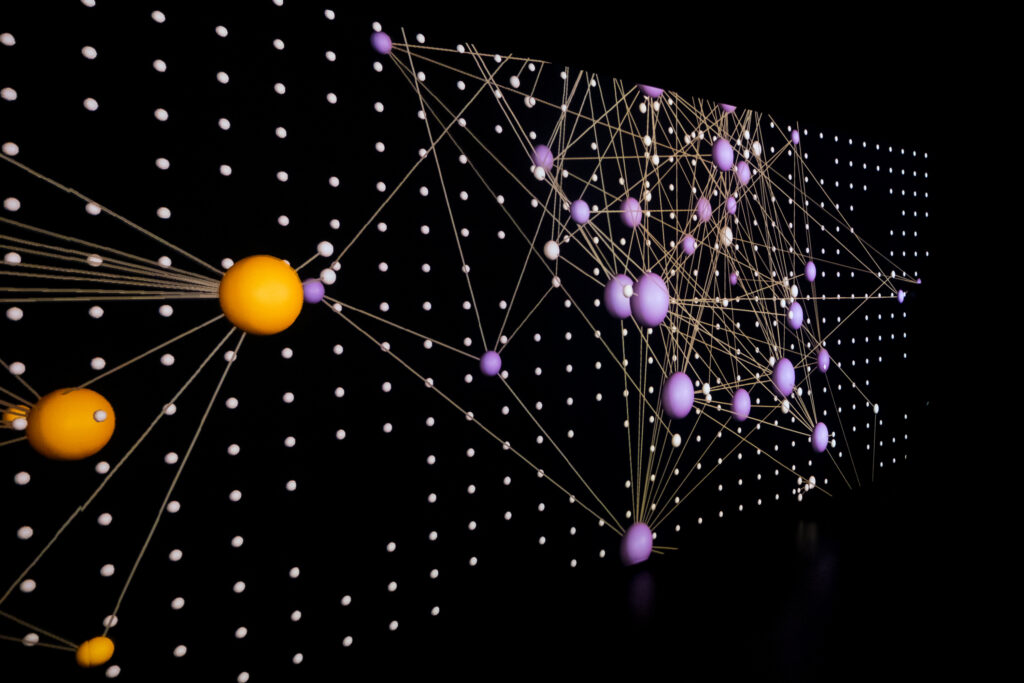Data & Digital Art: exhibition “Understanding the Invisible” in MEET

MEET Digital Culture Centre, one of the partners of the DataStories project, presented in recent months an exhibition of digital art works ‘Understanding the Invisible’ that brings together three works exploring the relationship between art and data.
Renaissance Dreams by Refik Anadol (2020)
Diving into the depths of ‘Renaissance Dreams’ is like taking a journey through time. Anadol takes the rich historical heritage of the Renaissance and reworks it through the lens of contemporary digitisation. The artist does not merely explore the data as mere numbers or information, but as cultural traces that reveal the intricacies, similarities and divergences of Renaissance art. In this way, Anadol revitalises and reinterprets a centuries-old cultural heritage through a modern visual language.

Mapping the NFT Revolution by Mauro Martino (2022)
With the advent of technology and Artificial Intelligence, art has found new ways of expressing itself. Mauro Martino, with ‘Mapping the NFT Revolution’, introduces us to the power of AI in artistic creation. Using machine learning systems, Martino offers a revolutionary look at digital art, weaving a dynamic narrative of the virtual imaginary that has developed since the 1960s. This work represents a bridge between the past and the future of art, where AI acts as a mediator between the artist and his vision.

The Art of Connection by Albert-László Barabási (2023)
The complexity of data and the relationships it encompasses is at the heart of Albert-László Barabási’s work. With ‘The Art of Connection’, the artist and scientist takes us on a journey through network patterns, revealing the structure and complexity of phenomena that often escape the human eye. Barabási shows us how data can reveal new perspectives and connections, offering an illuminating view of what would otherwise remain hidden.
MEET Digital Culture Centre, with its exhibition of site-specific works, offers a fascinating perspective on the fusion of art and data. The works by Anadol, Martino and Barabási are not only examples of how art can be enriched through the processing of data, but are also an invitation to reflect on the very nature of culture, connection and complexity in the modern world. In an age dominated by digitisation, these works remind us of the power of art in translating and interpreting our ever-changing reality.





